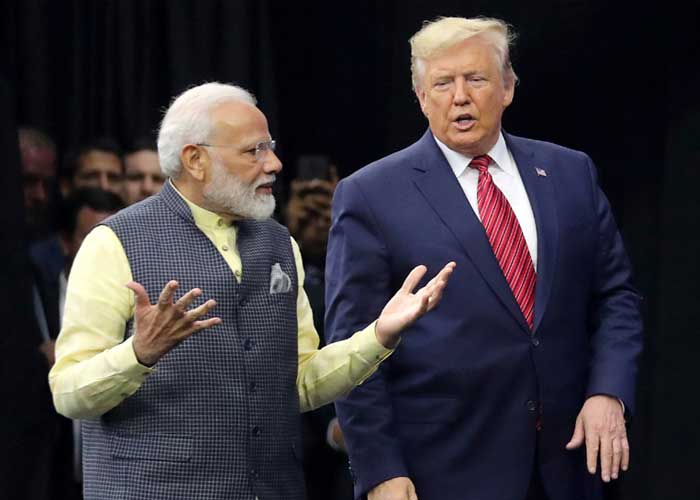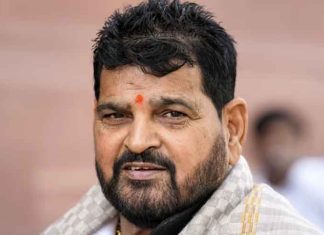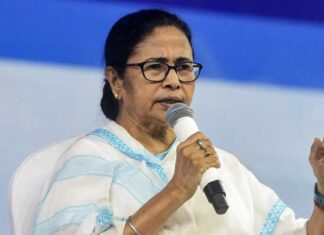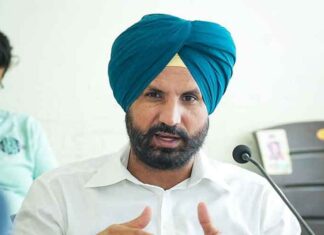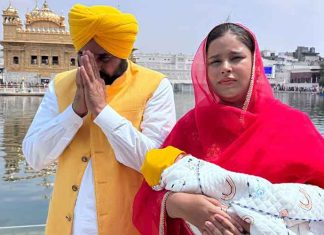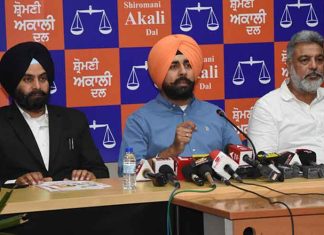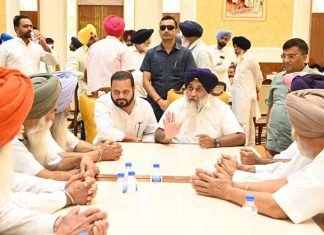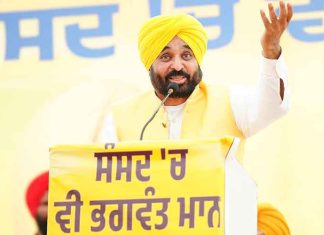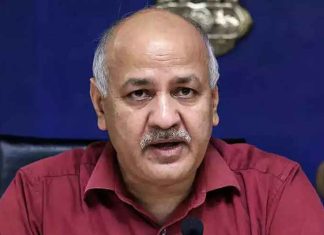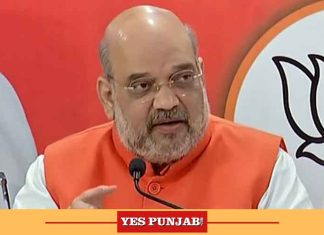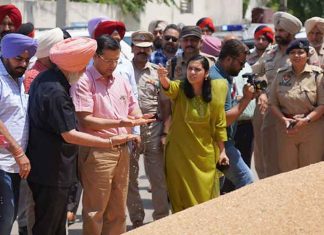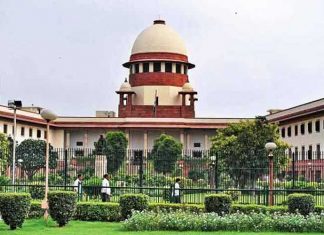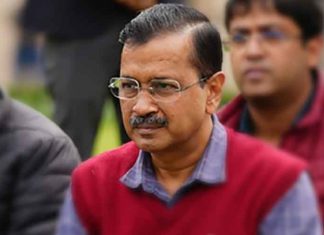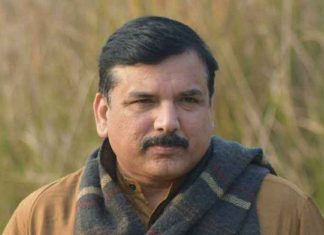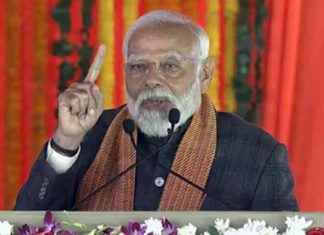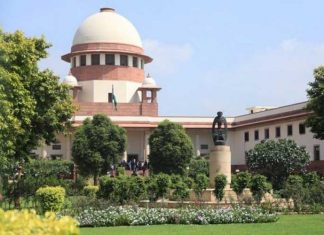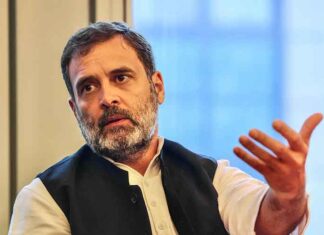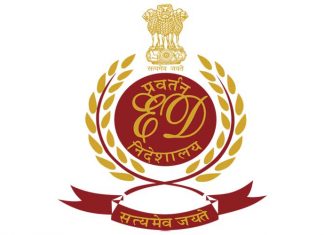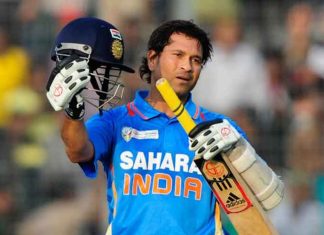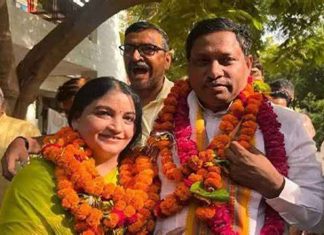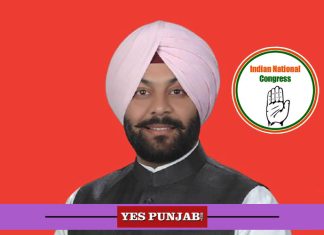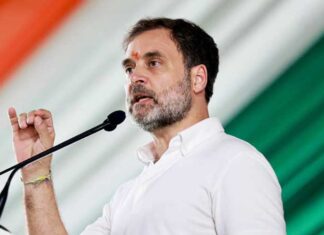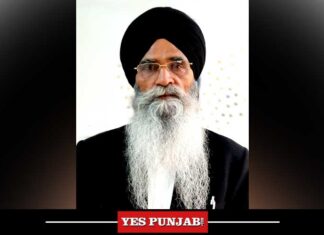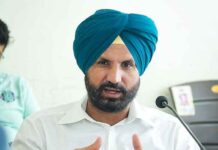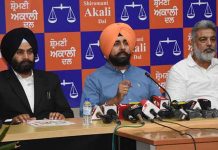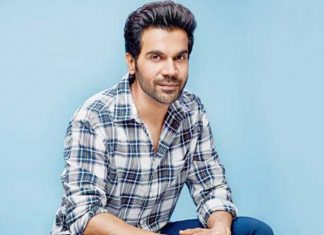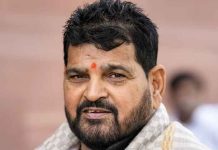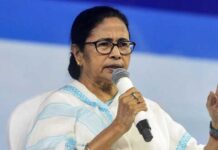New York, Jan 21 2024-
As the 2020 presidential elections were heating up, former President Donald Trump paid a quick visit to India where he was feted by a cheering crowd of about 125,000 at an Ahmedabad stadium, appealing to his visions of greatness and grandeur.
He got Prime Minister Narendra Modi’s famous bearhug in New Delhi and Washington, and his popularity, rated on confidence levels by a Pew Research Poll released around that time, was 56 per cent in India, far higher than the Gallup Poll average rating of 41 per cent in the US.
Strutting with the prime minister in India and in Houston at a Modi event, he revelled in the reflected adulation of the masses.
That was the acme of ties with India for a mercurial man swayed by emotions.
But he lost the 2020 election.
Now he is again running for president and if he were to be elected, Trump 2.0 is likely to pick up from where he left off: Closer on geostrategy, no sermons on human rights and climate change, but tougher on trade.
Overall, though, a Trump 2.0 will have to fit in the panorama of Trumpism characterised by his transactionalism of weighing policies by their value to him, his mercurial character that could send his policies veering off in unexpected directions and his stated preference for isolationism, sometimes in contradiction to his goals of global leadership.
And there is his unrestrained rhetoric that can set off diplomatic quakes, if not social media squalls.
Both Republicans and Democrats (with a few exceptions on the left) support closer ties between India and the US and their ties slid smoothly into the administration of President Joe Biden, save for some nuances.
While Modi soon enough also crushed Biden in bear hugs, his administration, bound by the geopolitics of China, has moved closer to India on various fronts providing continuity.
Biden and, especially, Vice President Kamala Harris have been preaching to India about human rights, a bedrock of Democratic platforms, and that irritant may be soothed if there is a Trump administration again.
Human rights did not take priority in relations with India during Trump’s presidency and in the denunciations of Modi as a strongman by the liberal establishment and media, Trump probably sees a reflection of himself.
On a related issue, the Biden administration has been reticent about the alleged plot involving an Indian police officer against a US citizen leading the Khalistan movement, but the president reportedly declined an invitation to India’s Republic Day events this month because of the controversy.
An early test for a Trump 2.0, if it comes about, would be how it would handle the fallout from the alleged plot, which is likely to drag on possibly into the next year.
If canons of human rights are deeply embedded in Biden’s policies, it is trade in Trump’s when it comes to India.
On the trade front, there would be a stark divergence from the Biden administration, while a continuation of Trump’s last innings.
In what is his only substantial statement about India during the current campaign, he threatened “retribution” for India’s high tariffs on some imports from the US as a tit-for-tat.
He told Fox News early last year that India imposed tariffs of 100 per cent to 200 per cent on certain imports, citing, in particular, his old beef about the import duties on Harley Davidson motorcycles.
“Call it retribution, you could call it whatever you want. If they are charging us, we charge them”, he said.
During his tenure, he asserted that India does not “provide equitable and reasonable access to its markets” and withdrew the tariff concessions India enjoyed under the Generalised System of Preferences, a programme to help developing countries’ exports.
After the supply chain disruptions of the Covid pandemic and the strategic threat from the dependence on China, the Biden administration embarked on a course of bringing manufacturing back to the US – which would mesh with Trump’s outlook – but also “friendshoring”, promoting manufacturing in or moving dependence from China to friendly countries.
India is in some ways a beneficiary of “friendshoring” as some US manufacturers look to India as an alternative to China and Trump’s policies could affect these if he makes it this November.
If he is elected, Trump would have to grapple with how far to go with this policy in general, not just for India, as it could clash with his fanatic America First and Make in America policies loudly reiterated in his campaign – and there are limits to how much manufacturing the US can absorb.
A climate change sceptic, Trump will not be preaching to India like Biden and his officials do, but he will continue to scapegoat India for the ills of global warming citing its air pollution.
On the subject of climate change in his last debate with Biden in 2020, he justified abandoning the Paris climate accord saying, “Look at India. It’s filthy. The air is filthy”.
He also riled about the US spending on climate change-related issues, including the subsidies direct and indirect on projects to help countries battle global warming.
The US government’s International Development Finance Corporation, for example, gave a $500 million loan on concessional terms for a manufacturing facility for solar energy products in India, but such projects may disappear if Trump is elected.
It also goes the other way: Some Indian companies are investing in solar energy and hydrogen facilities in the US to benefit from Biden incentives and these may be curtailed if there is a Trump administration.
Trump’s unsettled views on Russia’s invasion of Ukraine may come to reflect more of the growing disenchantment with Kyiv in his party and base, in which case India’s neutrality may not seem as glaring and as a point to unease as it now seems.
The economic fallout if there is a Trump administration would be less pressure on India over importing Russian oil and its continuing economic and defence ties.
Trump took a broader view of the Indo-Pacific region and its role that aligned with India’s in a world where China assumes an increasingly aggressive posture towards neighbours and vies for global dominance.
In his tenure, he extended the Pacific remit to the Indian Ocean, embracing India in the strategy for the region.
He rebooted the Quad, the grouping with India, Japan and Australia, a policy that only strengthened under Biden, and he started regular summits and regular meetings of the group.
Symbolically he renamed the US military’s Pacific Command as the Indo-Pacific Command.
This strongest geostrategic bond between the US and India, which Trump discerned, can be expected to grow.
Before he ran for president in 2016, Trump had taken a very bellicose attitude towards Pakistan calling for its de-nuclearisation.
In office, political realities caught up and he softened his stance towards Islamabad when he needed its assistance for pulling out of Afghanistan.
In 2025, if he is president, Pakistan may not be as important for him
Biden extended the Quad concept towards the Middle East, creating the I2U2 group of India, Israel, the United Arab Emirates and the US, and while that could fit in with Trump’s outlook of a broader regional cohesiveness, the idea is now in shambles.
Trump is known for his disdain for the Global South, the conceptually collective of the developing world whose voice India wants to be.
This could be an area of friction, even though India under Modi is not bellowing the strident rhetoric of the Nehru-Gandhi eras.
Officials in a Trump administration could be expected to push the “if you are not with us, you are against us” line that was the epitome of Nikki Haley’s tenure as the cabinet-ranked permanent representative to the United Nations and its resurgence could ensnare independent-minded India in the rhetoric.
Trump is often smeared as anti-immigrant in the media and by the liberals, who fail to distinguish between legal immigration that he supports – and wants to revamp – and the illegal immigration that he attacks in the harshest terms.
He has proposed a merit-based system of immigration similar to Canada’s that selects immigrants based on their abilities and other factors like the need for their skills that would benefit highly-qualified Indians who are now stuck in a decades-long limbo.
However, he wants to abolish chain migration – people coming in only based on family ties – and has promised a harsh crackdown on illegal immigrants that would hit the tens of thousands who came in from India with dubious asylum claims under Biden’s almost-open-border policy.
And finally, there are personalities to consider in a putative Trump 2.0: Kashyap “Kash” Patel and Vivek Ramaswamy.
Ramaswamy, who pictured himself as a mini-Trump in the unsuccessful run for the Republican nomination, may get a position if there is a Trump administration.
Diehard loyalist and Trump adviser on strategic affairs, Kash Patel is, however, likely more of an important figure, having been considered for the acting directorship of the Central Intelligence Agency by Trump at the age of 41.
And Haley who had initially opposed him in the 2016 campaign but ended up in his cabinet?
(Arul Louis can be contacted at [email protected] and followed at @arulouis) (Agency)



